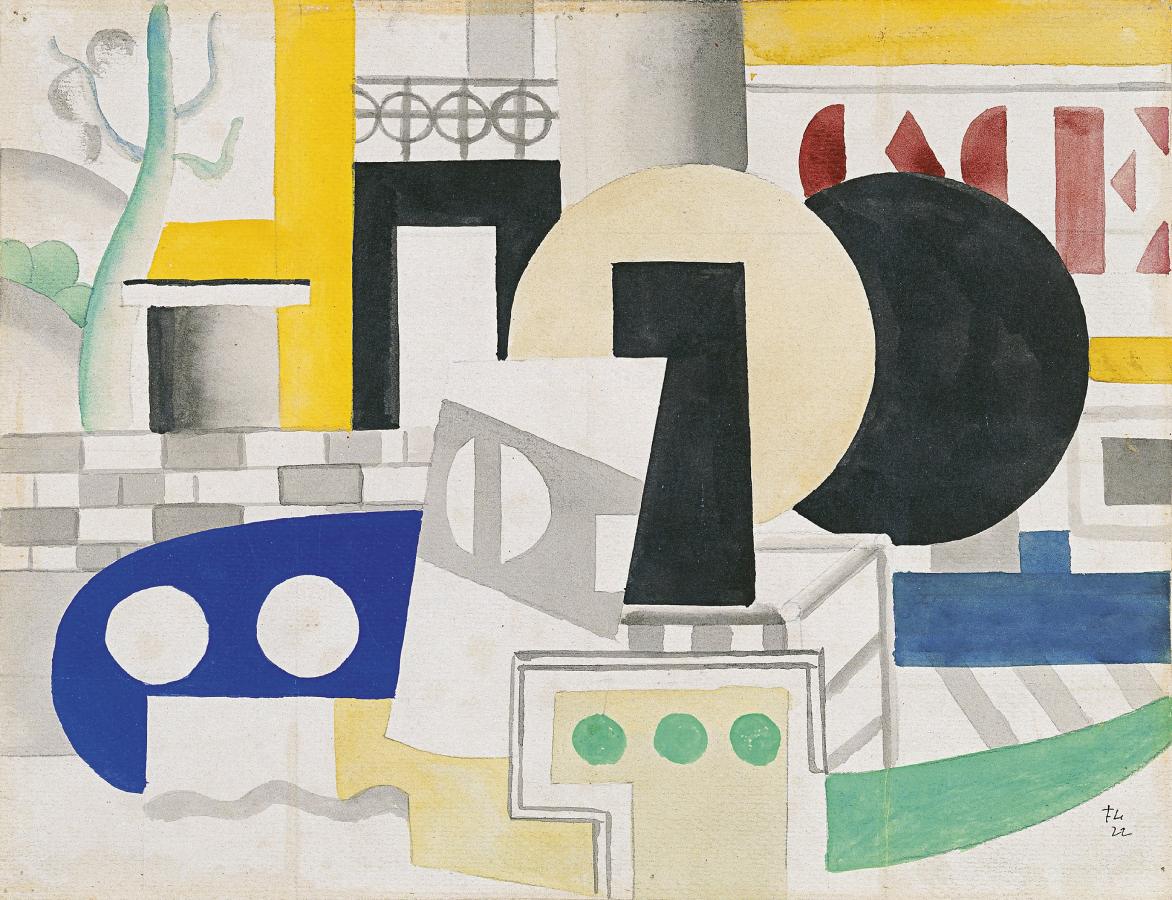Léger, Fernand (1881-1955)
Le remorqueur (The Tugboat)
1922
Gouache on paper, 23.8 x 31.4 cm
Museo Thyssen-Bornemisza, Madrid
The experience of warfare brought Léger face to face with a mechanised society and a world transformed by technology. On returning he abandoned the abstract compositions of geometrical shapes and primary colours of earlier years, driven by the yearning to focus his attention on real objects belonging to the modern world. Furthermore, the general trend towards what Jean Cocteau defined as rappel à l’ordre and the simplifying influence of the Purism of Ozenfant and Le Corbusier brought about Léger’s shift to what Christopher Green describes as “a simpler, more coordinated presentation of stylistic contradictions, in which a more unified and clear-cut planar architecture provided the setting for a more unified and more clear-cut presentation of the machine-man figure.”
The Tugboat, dated 1922, was known until not long ago as The Terrace, the title with which it was placed on the market in 1976, owing perhaps to the balcony that can be distinguished in the centre of the composition. It belongs to a series of works that repeat the theme of tugboats crossing an urban landscape, dated between 1910 and 1923, including several oil paintings and gouaches in different formats. This set of paintings contrasts undulating elements of nature, such as the sinuous silhouette of a tree which is repeated in all of them, with geometrical shapes characteristic of the industrialised and mechanised world. As may be deduced from a letter sent by Léger to his friend the critic Maurice Raynal, the choice of the tugboat as a theme may be due to the cancellation of a commission for the stage scenery for a play, for which he had planned a backdrop featuring a large boat.
Paloma Alarcó (T-B)
